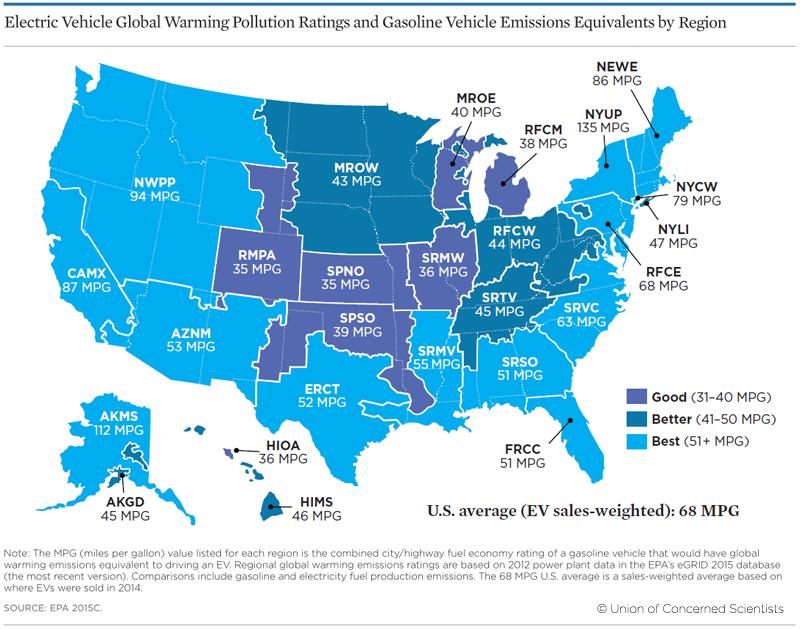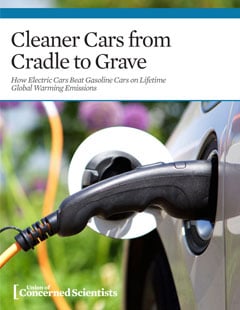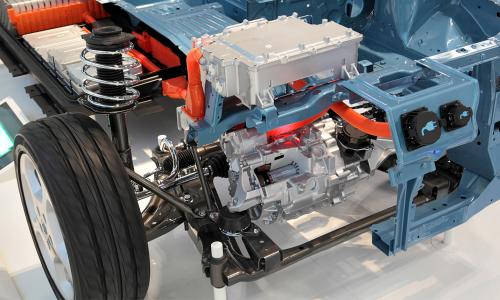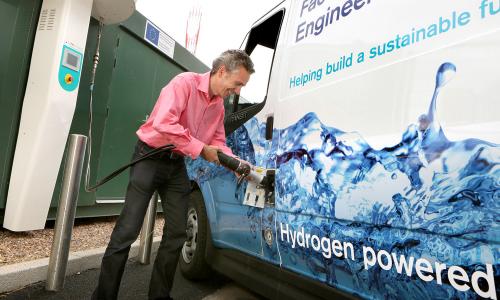Since we first published our State of Charge report in 2012, the environmental benefits of electric vehicles (EVs) have continued to grow. Driving the average EV is responsible for fewer global warming emissions than the average new gasoline car everywhere in the US—a fact attributable to more efficient EVs and an increasingly clean electricity grid.
Read our latest report, "Driving Cleaner",and latest analysis "Are Electric Vehicles Really Better for the Climate? Yes. Here’s Why," for more information.
What are the global warming emissions of electric cars on a life cycle basis—from the manufacturing of the vehicle’s body and battery to its ultimate disposal and reuse? To answer this, the Union of Concerned Scientists undertook a comprehensive, two-year review of the climate emissions from vehicle production, operation, and disposal. We found that battery electric cars generate half the emissions of the average comparable gasoline car, even when pollution from battery manufacturing is accounted for.
A life cycle analysis of EVs
All vehicles experience three distinct life stages: manufacturing, operation, and end-of-life. Each stage is linked with carbon dioxide and other greenhouse gas emissions—but those emissions differ between gas-powered cars and electric cars.
Both types of vehicle begin in much the same way. Raw materials are extracted, refined, transported, and manufactured into various components that are assembled into the car itself. Because electric cars store power in large lithium-ion batteries, which are particularly material- and energy-intensive to produce, their global warming emissions at this early stage usually exceed those of conventional vehicles. Manufacturing a mid-sized EV with an 84-mile range results in about 15 percent more emissions than manufacturing an equivalent gasoline vehicle. For larger, longer-range EVs that travel more than 250 miles per charge, the manufacturing emissions can be as much as 68 percent higher.
These differences change as soon as the cars are driven. EVs are powered by electricity, which is generally a cleaner energy source than gasoline. Battery electric cars make up for their higher manufacturing emissions within eighteen months of driving—shorter range models can offset the extra emissions within 6 months—and continue to outperform gasoline cars until the end of their lives.

The specific emissions of any given EV model will depend on the vehicle’s efficiency and the electricity that powers it (check out our interactive tool to explore EV emissions in your area). For everyone in the country, charging the average new EV produces far fewer global warming pollutants than driving the average new gasoline car. In some of the country’s cleanest regions (including parts of California, New York, and the Pacific Northwest), driving an electric car is equivalent to getting 85 miles per gallon.
By the end of their lives, gas-powered cars spew out almost twice as much global warming pollution than the equivalent electric car. Disposing of both types of vehicles (excluding reusing or recycling their batteries) produces less than a ton each.
What’s next?
Electric vehicles already result in far less climate pollution than their gas-powered counterparts, and they’re getting cleaner. Optimizing EV production and the disposal or reuse of batteries could further increase their environmental benefits. And as electricity becomes cleaner (which it is), the difference between electric cars and gasoline cars will only grow—cementing the role of electric vehicles in halving U.S. oil use and cutting global warming emissions.
Read more by downloading the full report, use our interactive tool to explore EV emissions in your area, or read most recent updates in our blog.







